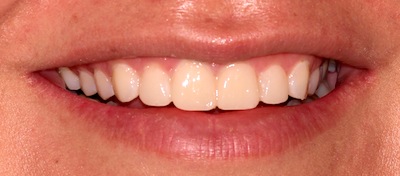 The best thing we can do for our patients is paint a realistic picture of what they can expect from our efforts and proposed treatment. One of the easiest ways you can do this for them is mock-up up their teeth to let them visualize the changes you're proposing. This is an important step before you perform irreversible treatment. While this can be achieved several ways, the following is my quick and effective preferred method.
The best thing we can do for our patients is paint a realistic picture of what they can expect from our efforts and proposed treatment. One of the easiest ways you can do this for them is mock-up up their teeth to let them visualize the changes you're proposing. This is an important step before you perform irreversible treatment. While this can be achieved several ways, the following is my quick and effective preferred method.
Have a wax-up of the proposed changes completed. It's critical that you have a clear understanding of your patient's goals, and if your lab is doing the wax-up make sure to communicate these goals with them. Also, if your lab is preparing the wax-up it's vital they know your limitations in preparing your patient's teeth; if not, they may provide a wax-up that will be unachievable.
Once the wax-up is complete you need a matrix of it in order to transfer it to the patient's mouth. One of the easiest ways to fabricate this matrix is to use a material like Copyplast from Great Lakes Orthodontics; it's a flexible thermoplastic material. You could also use Platinum 85 from Zhermack, which is a PVS putty that you form over your model. It's critical that you make a stone duplicate of your wax-up if you're using one of these materials. I find it less stressful to use a stone duplicate from my lab for either method so I don't have to worry about damaging the wax-up.
Once your matrix is made, simply load it with a bis-acryl of your choice and place it over the teeth. Assuming you made an accurate matrix, you'll have a close representation of the wax-up on your patient's teeth with very little flash to remove.
While this method will not work for all cases, it works nicely for many, and it's a great way for you and your patient to preview the proposed changes. The mock-up can be removed by simply pulling at the margins with hand instruments. I hope you'll find this technique helpful in your practice.
John R. Carson, DDS, PC, Spear Visiting Faculty. [ www.johnrcarsondds.com ]
Comments
February 22nd, 2013
February 22nd, 2013
February 22nd, 2013
February 23rd, 2013
February 24th, 2013
February 24th, 2013